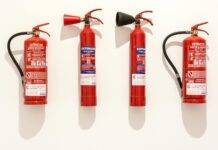
Safety Officer: Safety Quiz for Safety Officer with Answers (MCQs Test)
Safety quizzes are an essential tool for ensuring workplace safety. They provide a structured way to assess employees’ knowledge of safety procedures and regulations, helping to prevent accidents and injuries. For safety officers, administering these quizzes is crucial in maintaining a safe work environment.
Importance of Safety Quiz in Occupational Safety
Safety quizzes serve as a proactive measure to reinforce safety protocols and educate employees about potential hazards. They help identify areas where additional training may be necessary and ensure compliance with regulatory standards. By regularly testing employees’ knowledge, safety officers can mitigate risks and promote a culture of safety within the organization.
Structuring an Effective Safety Quiz
Creating Relevant Questions
Safety quizzes should focus on topics directly related to the workplace environment and the specific duties of employees. Questions should cover a range of safety-related subjects, including hazard identification, emergency procedures, and proper use of personal protective equipment (PPE).
Incorporating Multiple Choice Questions (MCQs)
MCQs are a popular format for safety quizzes as they offer clear answer choices and can assess understanding across various topics efficiently. However, it’s essential to ensure that the options are well-designed to prevent guessing and accurately measure knowledge.
Topics Covered in Safety Quizzes
Workplace Hazards
Questions in this category may cover common workplace hazards such as slips, trips, and falls, as well as specific risks related to machinery, chemicals, or electrical equipment.
Emergency Procedures
Employees should be familiar with evacuation routes, assembly points, and protocols for responding to fires, medical emergencies, or other incidents.
Safety Equipment and PPE
Quiz questions may assess employees’ understanding of the proper use, maintenance, and storage of safety equipment, including hard hats, gloves, goggles, and respiratory protection.
Regulatory Compliance
Employees should be aware of relevant safety regulations and standards set forth by government agencies such as OSHA (Occupational Safety and Health Administration) or industry-specific guidelines.
Benefits of Regular Safety Quizzes
Regular safety quizzes help reinforce training materials, identify areas for improvement, and measure the effectiveness of safety programs. By engaging employees in continuous learning, organizations can reduce the likelihood of accidents and injuries in the workplace.
Tips for Designing Engaging Safety Quizzes
Visual Aids
Incorporating visuals such as images, diagrams, or videos can enhance understanding and retention of safety concepts.
Gamification
Adding elements of gamification, such as scoring, leaderboards, or rewards, can make safety quizzes more engaging and encourage participation.
Real-life Scenarios
Including real-life scenarios in quiz questions helps employees understand how safety principles apply to their daily tasks and responsibilities.
Implementing Safety Quiz Programs
Safety officers should establish clear guidelines for administering quizzes, including frequency, format, and scoring criteria. They should also ensure that quizzes are accessible to all employees and accommodate diverse learning styles.
Monitoring and Evaluation of Safety Quiz Results
After administering quizzes, safety officers should analyze the results to identify trends, areas of weakness, and opportunities for improvement. They can use this data to tailor future training efforts and address any gaps in knowledge or compliance.
Here's a safety quiz for a safety officer with multiple-choice questions (MCQs) along with answers:What does the acronym PPE stand for?- a) Personal Protection Equipment
- b) Public Protection Equipment
- c) Preventive Protection Equipment
- d) Personal Productive Equipment
Answer: a) Personal Protection EquipmentWhich of the following is not a type of fire extinguisher?- a) Class A - Water extinguisher
- b) Class B - CO2 extinguisher
- c) Class C - Foam extinguisher
- d) Class D - Electrical extinguisher
Answer: d) Class D - Electrical extinguisherWhat is the correct way to lift heavy objects?- a) Bend your back while lifting
- b) Keep the load away from your body
- c) Lift with your legs, not your back
- d) Use quick jerking motions to lift
Answer: c) Lift with your legs, not your backWhat does MSDS stand for?- a) Material Safety Data Sheet
- b) Manufacturing Safety Data Sheet
- c) Material Security Data Sheet
- d) Mandatory Safety Data Sheet
Answer: a) Material Safety Data SheetWhat does the acronym OSHA stand for?- a) Occupational Safety and Health Administration
- b) Occupational Safety and Hazard Administration
- c) Occupational Standards and Health Association
- d) Office of Safety and Health Administration
Answer: a) Occupational Safety and Health AdministrationWhat is the recommended distance for maintaining a safe following distance while driving?- a) 1 car length for every 10 mph
- b) 2 seconds of following distance
- c) 3 car lengths for every 20 mph
- d) 5 seconds of following distance
Answer: b) 2 seconds of following distanceWhich of the following is a common symptom of carbon monoxide poisoning?- a) Dizziness
- b) Headache
- c) Nausea
- d) All of the above
Answer: d) All of the aboveWhat is the correct procedure to handle a chemical spill?- a) Quickly wash the area with water
- b) Contain the spill, then clean it up following proper procedures
- c) Ignore the spill and continue working
- d) Call maintenance and wait for them to handle it
Answer: b) Contain the spill, then clean it up following proper proceduresWhat should be done if a fire alarm sounds in the workplace?- a) Immediately evacuate the building using the nearest exit
- b) Investigate the cause of the alarm before taking action
- c) Wait for instructions from a supervisor
- d) Ignore the alarm unless smoke is visible
Answer: a) Immediately evacuate the building using the nearest exitWhat is the correct method for using a fire extinguisher?- a) Aim at the top of the flames and spray
- b) Aim at the base of the flames and sweep from side to side
- c) Aim at the source of the fire and spray continuously
- d) Aim randomly and hope for the best
Answer: b) Aim at the base of the flames and sweep from side to sideQuestion: Which of the following is a common workplace hazard?- A) Heavy lifting
- B) Eating at your desk
- C) Proper ventilation
- D) Using ergonomic chairs
Answer: A) Heavy liftingQuestion: What should you do in case of a fire emergency?- A) Ignore the alarm and continue working
- B) Exit the building using the elevator
- C) Use the nearest exit to evacuate the building
- D) Wait for instructions from your supervisor
Answer: C) Use the nearest exit to evacuate the buildingQuestion: When should you wear personal protective equipment (PPE)?- A) Only when you feel like it
- B) When working with hazardous chemicals
- C) During lunch breaks
- D) Only during safety inspections
Answer: B) When working with hazardous chemicalsQuestion: What does OSHA stand for?- A) Occupational Safety and Health Administration
- B) Office of Safety and Hazard Assessment
- C) Organization for Standardized Hazard Assessment
- D) Occupational Safety Handbook Association
Answer: A) Occupational Safety and Health AdministrationQuestion: How often should safety inspections be conducted in the workplace?- A) Once a year
- B) Only when there's an incident
- C) Regularly and as needed
- D) Every five years
Answer: C) Regularly and as neededQuestion: What is the purpose of a safety data sheet (SDS)?- A) To list company contact information
- B) To provide instructions for using equipment
- C) To identify hazardous chemicals and their potential hazards
- D) To showcase employee achievements
Answer: C) To identify hazardous chemicals and their potential hazardsQuestion: Which of the following is an example of a biological hazard in the workplace?- A) Wet floor
- B) Noise pollution
- C) Exposure to infectious diseases
- D) Electric shock
Answer: C) Exposure to infectious diseasesQuestion: What is the purpose of an emergency evacuation drill?- A) To test the fire alarm system
- B) To practice evacuation procedures in case of an emergency
- C) To assess employee productivity
- D) To identify potential hazards in the workplace
Answer: B) To practice evacuation procedures in case of an emergencyQuestion: Which of the following is a common cause of slips, trips, and falls in the workplace?- A) Proper lighting
- B) Wearing appropriate footwear
- C) Cluttered walkways
- D) Using handrails
Answer: C) Cluttered walkwaysQuestion: What should you do if you witness a workplace safety violation?- A) Ignore it and continue working
- B) Report it to your supervisor or safety officer
- C) Confront the person violating the safety rules
- D) Join in on the violation to avoid conflict
Answer: B) Report it to your supervisor or safety officerConclusion
Safety quizzes play a vital role in promoting a culture of safety within organizations. By regularly assessing employees’ knowledge and understanding of safety procedures, safety officers can mitigate risks, prevent accidents, and protect the well-being of workers.
FAQs
1. How often should safety quizzes be administered?
- Safety quizzes should be administered regularly, with frequency determined by factors such as industry regulations, workplace hazards, and the level of employee turnover.
2. Are safety quizzes mandatory for all employees?
- Yes, safety quizzes are typically mandatory for all employees to ensure consistent understanding and compliance with safety protocols.
3. Can safety quizzes be customized to specific job roles?
- Yes, safety quizzes can and should be customized to address the unique hazards and responsibilities associated with different job roles within an organization.
4. What should I do if an employee consistently performs poorly on safety quizzes?
- If an employee consistently performs poorly on safety quizzes, additional training and reinforcement may be necessary. It’s essential to address any gaps in knowledge promptly to prevent accidents and injuries.
5. How can I measure the effectiveness of safety quizzes?
- The effectiveness of safety quizzes can be measured by tracking metrics such as quiz scores, incident rates, and employee feedback. Monitoring trends over time can help identify areas of improvement and gauge the overall impact on workplace safety.

























Hi everyone
It is my hobby others lives
Thank you